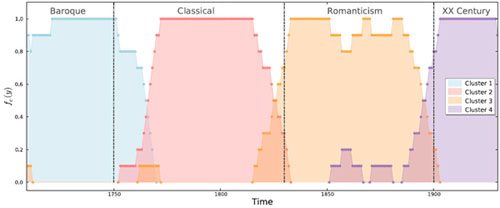I guess this tune by three notes!

A computer algorithm specially trained by a team of researchers that can determine whether a melody belongs to different periods (baroque, classicism, romanticism and postromanticism) can be answered in just three notes from any part of the musical composition.
True, the system itself cannot identify the composition by three notes. But this is not required - the developers set themselves the task of analyzing the evolution of music over a period of 200 years (1730-1930), and to teach the computer system to correctly identify the melody belonging to one of the above periods / styles.
The essence of the study
The developers tried to identify separate patterns for each period / style, including the texture of the melody, harmony, rhythm and melody.
')
Computer system training was conducted on the basis of the well-known Peachnote service, to which more than 20 thousand pieces of music of the styles described above were previously added. The machine was able to highlight certain patterns of musical works in semitones or notes. After the cluster analysis, the results were consolidated into a single graph, which shows the stages of evolution of musical styles, as well as transitions between styles.

Here, the transition between various musical styles of the past is quite accurately shown.
The computer helped to reveal the unique characteristics of each of the analyzed musical styles, a clear connection was also defined between the distribution of intervals in a particular musical composition and the human ability to predict the development of a sound composition. By the way, the popular theory claims that a person is able to predict the development of a musical composition of all by three notes. As we see, now the computer system can do the same, after appropriate training.
As far as can be judged, a person perceives music depending on the subconscious "waiting" for the distribution of musical intervals in each specific composition. The main criterion is the distance between two consecutive notes. Accordingly, on three notes a person (and now a computer) can predict how a musical composition will develop.
Why all this?
In principle, scientists / engineers often study something / build theories for the sake of pure science, without application to practice. In this case, the authors of the project hope to apply their work and to highlight the patterns of human speech. This is done for the early diagnosis of Parkinson's disease, for example, when everything is still well with motor skills, but the voice is already changing, and only computer analysis is able to show this by detecting the disease at an early stage.
In addition to Parkinson's disease, it is possible to single out the characteristic patterns of a person’s voice for other diseases, including mental ones.
Probably, in the near future, such diseases can be diagnosed without problems, with verbal communication with a person (for example, by telephone).
Source: https://habr.com/ru/post/230759/
All Articles